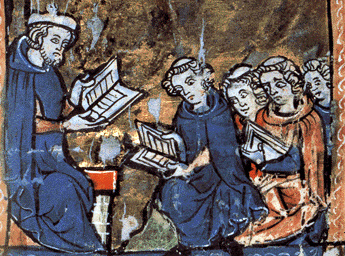Life of St Edmund §
Edited by Tarrin Wills
ofer ‘over’
ofer (prep.; prep): over, above, across, throughout, during, after, without, against, despite
Closesancte ‘St’
gen. sg.
sanct (noun m.; masc noun): saint
sancte Benedictes stōwe ‘St Benedict’s burial place’: I.e. St Benoit sur Loire
CloseBenedictes ‘Benedict’s’
gen.
sancte Benedictes stōwe ‘St Benedict’s burial place’: I.e. St Benoit sur Loire
Closestōwe ‘burial place’
dat. sg.
stow (noun f.; fem noun): place
sancte Benedictes stōwe ‘St Benedict’s burial place’: I.e. St Benoit sur Loire
Closetō ‘to’
to (prep.; prep): to, into, for, from, as a; adv. too, also; excessively, very; forth, onwards
Closehātte ‘was called’
3rd pers. pret. sg.
hatan (verb; Class 7 str verb): command; call, name; be named; promise
CloseTeaching text: text section
Here you can see a piece of text. Clicking on words in the text will show you the dictionary headword, grammatical information and notes on how the word is used.
You should pay careful attention to the explanation of each word. You can test your knowledge using the translation and other exercises.
In some cases there may be audio of a modern Icelandic rendition of the text on this page.
